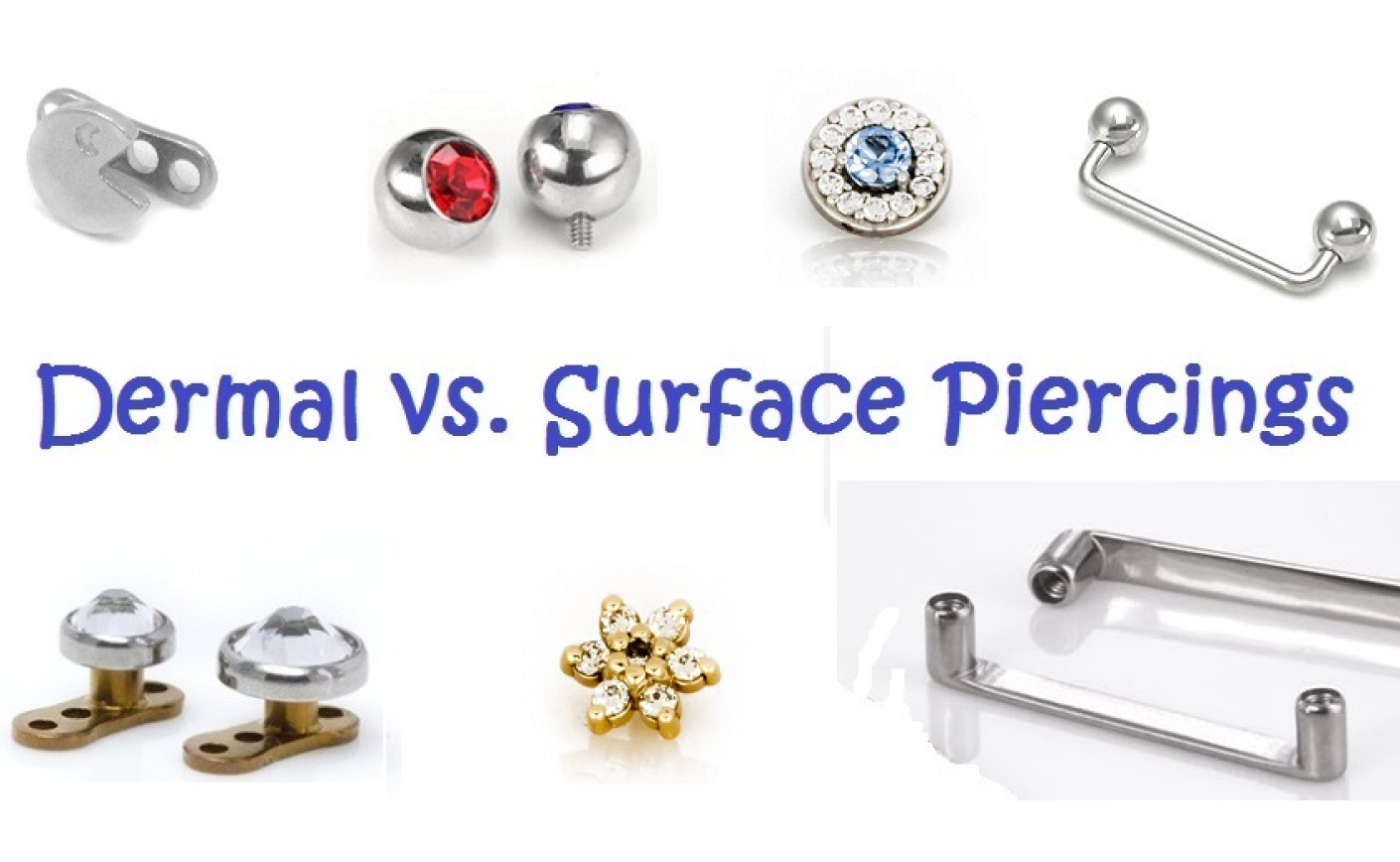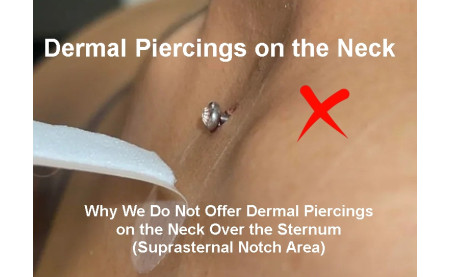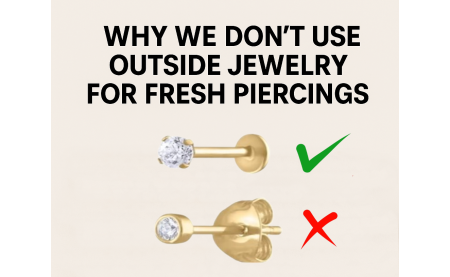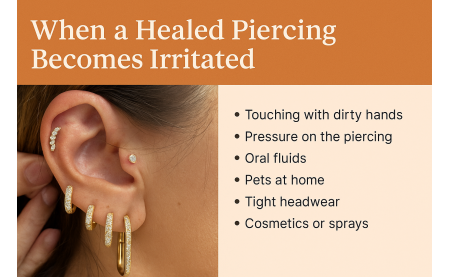Why We Don’t Recommend Surface Piercings — And Why Dermal Piercings Are the Better Option

Introduction
Decorative piercings on flat areas of the body—like the nape, chest, hips, or wrists—are undeniably eye-catching. Many clients request surface piercings in these locations, expecting them to heal like a standard ear or nose piercing.
However, after years of professional experience and countless healed outcomes, we know that surface piercings have a very low long-term success rate. Instead, we recommend dermal piercings (also called microdermals or single-point piercings), which offer a similar aesthetic but heal more predictably, last longer, and cause far fewer complications.
What Is a Surface Piercing?
A surface piercing involves placing a barbell under the skin so that both ends exit through the skin in a flat area of the body. The jewelry shaft lies horizontally, just beneath the surface.
From an anatomical standpoint, this means the jewelry passes through a shallow layer of subcutaneous tissue—a layer that’s not ideal for anchoring jewelry because it’s thin, flexible, and in constant motion. Your body’s natural defense system recognises the bar as an intruder and slowly pushes it toward the surface in a process called migration.
Think of it like a tiny splinter: no matter how clean or well-made it is, your body still works to expel it.
Why Surface Piercings Fail
1. High Rejection and Migration Rate
Because the jewelry sits in shallow tissue and has two points breaking the skin, it experiences continuous tension. The body responds by slowly moving the jewelry outward until it’s visible beneath the skin and eventually ejects it entirely. This often leaves behind wide, visible scars.
2. Constant Mechanical Stress
Common surface piercing sites—such as the nape, wrist, hips, or chest—are high-movement areas. Bending, twisting, stretching, and rubbing from clothing or accessories cause microtrauma to the piercing channel every day. This prevents proper healing and accelerates rejection.
3. Poor Healing Conditions
The upper dermal tissue where surface piercings sit has limited blood supply compared to deeper layers. This slows the healing process and increases vulnerability to irritation and infection.
4. Double Entry Points
With two open ends, there’s twice the risk of bacteria entering, twice the friction, and twice the aftercare demands. Even perfect aftercare cannot change the fact that the jewelry’s position is mechanically unstable.
Why Dermal Piercings Work Better
A dermal piercing uses a small anchor base placed beneath the skin in the dermal or subdermal layer, with only one end of the jewelry visible. This anchor is inserted through a single entry point, and the surrounding tissue grows snugly around it, holding it in place.
Because dermals don’t bridge the skin’s surface from one side to the other, there’s no “push-pull” effect that causes migration. They remain more stable even in areas of moderate movement. The tissue’s natural integration with the anchor greatly reduces the risk of rejection compared to surface barbells.
Key Advantages of Dermal Piercings Over Surface Piercings
| Factor | Surface Piercing | Dermal Piercing |
|---|---|---|
| Entry Points | 2 | 1 |
| Tissue Depth | Shallow, high rejection risk | Dermal/subdermal, better integration |
| Longevity | Short-term for most clients | Long-term possible with care |
| Scarring Risk | High | Lower |
| Comfort | Easily irritated by movement or clothing | More stable, less snagging |
| Healing Success | Low | High |
Risks of Surface Piercings We Want You to Avoid
- Almost inevitable migration leading to loss of jewelry
- Wide scars after rejection or removal
- Ongoing irritation from friction, bending, or pressure
- Prolonged healing that often never fully completes
- Frequent infections due to placement and movement
Our Professional Recommendation
At Piercing Zone Dubai, we do not offer surface piercings. We’ve seen too many clients invest time, money, and hope only for the jewelry to reject within months.
Instead, we recommend dermal piercings for those wanting stylish placements on flat or high-movement areas of the body. Dermals give the same visual impact but:
- Require only one entry point
- Integrate more naturally with the skin
- Are less prone to rejection
- Offer longer-lasting results when cared for properly
We use only implant-grade titanium or solid 14k/18k gold tops for dermals to ensure the highest biocompatibility and minimize allergic responses.
Final Word
Body art should be a joy, not a frustration. While surface piercings can look stunning in the short term, their biology is stacked against them. Dermal piercings, on the other hand, give you the beauty you want with a much higher chance of lasting success.
If you’re thinking about a decorative flat-area piercing, let’s talk about how a dermal could give you the look you want—without the heartbreak of early rejection.






